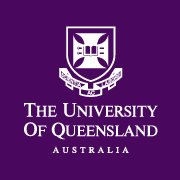Full description
Strong demand outlooks are driving investments in energy transition minerals (ETMs). New mines must be developed to supply the more than 30 minerals necessary in low-carbon energy technologies and infrastructure. Responsible investment is critical to ensure that mining for the energy transition does not come at unacceptable social and environmental costs. For responsible investment decisions to be made, the challenge lies in accessing relevant site-level information. Deep local knowledge is required across all sites that form the supply source. Unfortunately, local disclosures are rare and not systematically reported. Corporate reports, which are the expected repositories of such disclosures, too often provide aggregated, company-level information. This dataset addresses this information gap. This dataset is the product of an ARC-funded research project that manually reviewed long text fields from the S&P Global Capital IQ Pro database. It collects, summarises, and categorises local disclosures for 444 geolocated mining properties hosting the largest known ETM reserves and resources, representing the current and future pipeline of global ETM supply. Disclosures reflect recent activities and practices from 2000 to present and are relevant to evaluating on-the-ground social and environmental performance. The dataset connects these disclosures with project location, extracted or targeted commodities, resource size and development stage. Analysis of these disclosures identifies instances of resistance to mining development and costs-to-project originating from interactions between the developer and the host context. The analysis also reveals a considerable disclosure gap.Issued: 12 01 2024
Data time period: 15 10 2022 to 15 10 2022
Subjects
Commerce, Management, Tourism and Services |
Corporate Social Responsibility |
Environmental Science and Management |
Environmental Sciences |
Environmental Management |
Natural Resource Management |
Strategy, Management and Organisational Behaviour |
corporate disclosures |
energy transition minerals |
eng |
metals |
mining |
sustainable development |
transparency |
User Contributed Tags
Login to tag this record with meaningful keywords to make it easier to discover
Other Information
Research Data Collections
local : UQ:289097
Identifiers
- DOI : 10.48610/9853667



